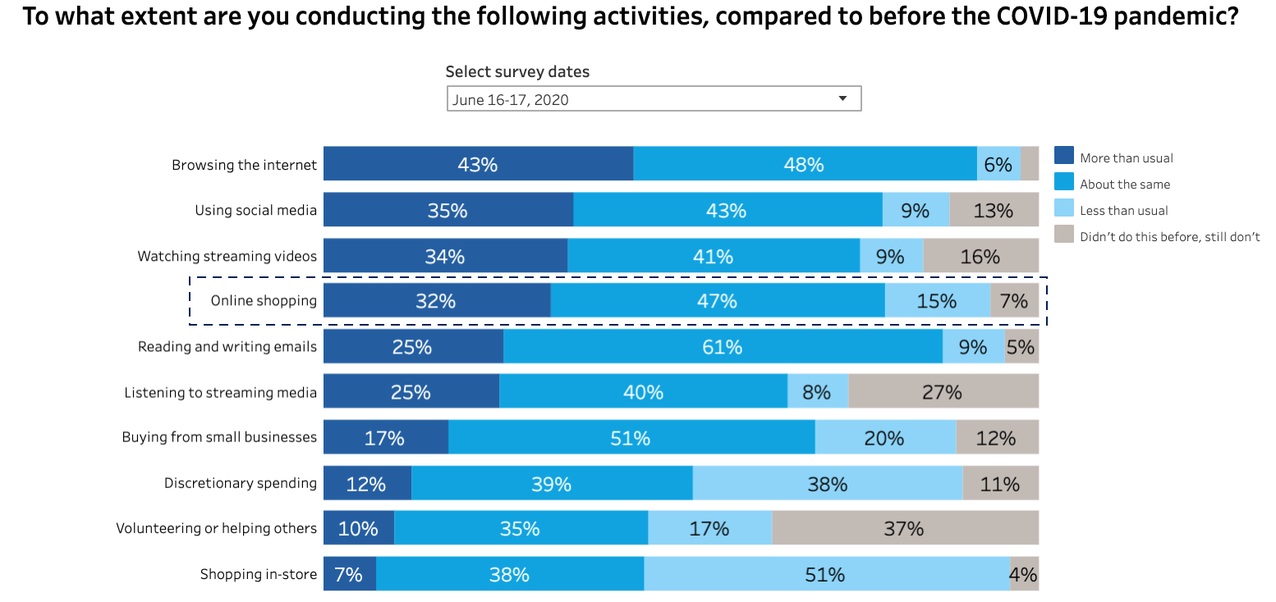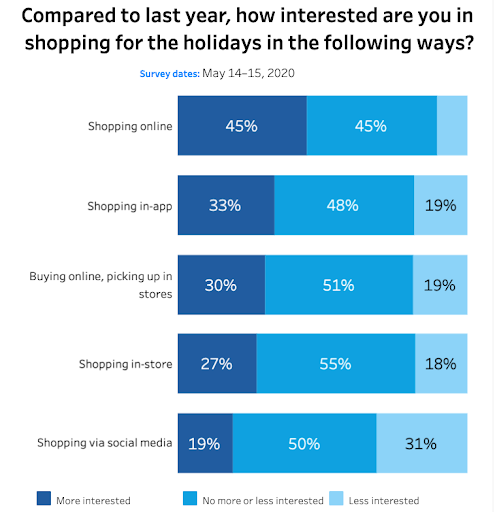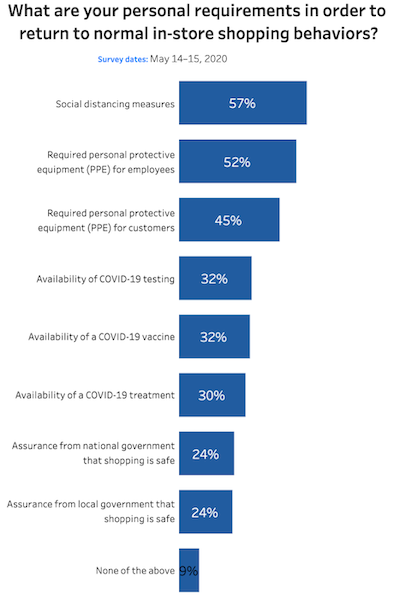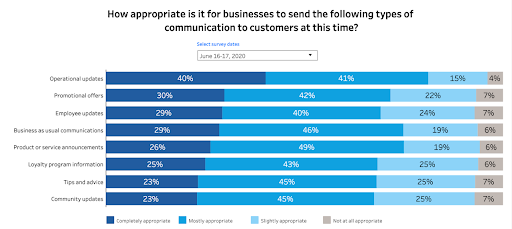The COVID-19 pandemic has gripped Europe for close to four months now, but it’s felt like a lifetime. The impact on the retail world has been immense and operations have been significantly upended. Initial concerns revolved around the closing of stores, peaks in online traffic, and stock-out issues for grocers.
Many retailers turned to online channels to stabilise their business, while others faced significant liquidity crunches or even went into administration. Eventually, safety measures were instituted, stores began reopening, and customers tentatively returned to shopping in a socially distanced world.
So far, retailers have done a substantial job of adapting to the changing circumstances, with even century-old organisations pivoting to meet their customers’ needs while keeping their stakeholders on board.
Impact on 2020 revenue growth will still be significant
Despite the efforts made by Retailers to adapt to the New Normal, there will be a significant hit to revenue growth in 2020. IDC estimates that the growth in global retail will be halved from pre-COVID estimates. Of course, the impact varies by sub-sector, with grocery expecting growth, while luxury will be hit especially hard this year.
McKinsey estimates a 30% drop in overall revenue in sectors such as apparel and fashion. These estimates are based on estimates from today, but depending on what happens over the next few months, the effects could be even worse. The impact could affect 2021 as well, with the lapping effect in grocery further affecting those numbers.
So, what can retailers do to boost revenue growth in the immediate term?
Looking at the next few months, retailers can focus their attention on a few quick wins to make up the shortfall in 2020 revenue growth targets.
1. Step up online commerce offerings
Digital commerce has surged during the crisis. According to the Salesforce Shopping Index, digital commerce globally grew 90% YoY in April, and 108% YoY in May. Also, a survey conducted by Salesforce found that consumers still expect to do more online shopping, and will buy more online even during the holiday season.
Below, we've included data from the Salesforce Snapshot Research Series for the UK, France, and Germany:
To succeed, retailers must capitalise on the renewed momentum in online sales. Salesforce Quick Start Commerce solutions are fast and easy to implement and can help launch a commerce site relatively quickly. In terms of fulfilment, partnerships with 3rd parties can help to enhance fulfilment capacities.
2. Boost marketing to increase store footfall
As stores begin to reopen, we’ve seen lower footfall. This is a combination of restrictions on capacity and shoppers’ hesitancy to return to stores. When it comes to going back into stores, shoppers have a number of concerns.
Retailers need to boost marketing in the right channels to get people back in stores or increase online shopping. While some retailers are concerned about the tone of their messaging, Salesforce research has shown that consumers find it appropriate to receive promotional and loyalty messaging at this time. Several retailers have also announced significant discounts to get people shopping again.
How can retailers boost long-term growth by embracing Digital-led Retail?
We have seen above that Digital Commerce has increased significantly during the crisis. In particular, online shopping has increased in categories like grocery, and amongst certain segments of the population (55+) that had been slow adopters over the last several years. The question on everyone’s mind is whether this momentum will continue post-crisis. Most estimates show a stabilisation in online commerce growth, at a rate greater than pre-crisis. With more and more customers moving online and sticking with it, retailers should focus on digitalisation as part of their strategy for increased growth.
What does ‘Digital-led’ Retail mean?
‘Digital-led Retail’ doesn’t stop with the online ecommerce site; it encompasses a complete digital customer shopping experience. It involves ensuring a seamless and consistent customer shopping journey across websites, apps, social media, contact centres and any other channels the customer opts for, including the physical store. It works best when it is in sync with the retailer’s internal operations, which includes supply chain agility and fulfilment capabilities.
How can Retailers embrace Digital-led Retail?
To succeed, retailers need to enhance their digital platforms or embark on their digital retail transformation, making sure to address the following levers for driving revenue growth:
Overall digital customer experience: Provide seamless digital customer engagement across the entire customer lifecycle and at every touchpoint.
Digital commerce: Focus on the online shop as the primary store, and ensure a smooth flow from search/browse to delivery.
In-store shopping experience: Connect the digital and physical, with in-store support, online shipping and click and collect, while also providing engaging in-store experiences.
Leverage the power of apps: Utilise mobile apps and loyalty apps for customers, as well as employee apps.
Digital marketing: Get to know customers and engage with them meaningfully, while also leveraging digital tools to enhance marketing ROI.
Customer support: Bring together all of a customer’s info to provide agents with a single view of the customer, leading to enhanced service experiences.
End-to-end supply chain visibility: Provide complete, real-time oversight of the supply chain by connecting with partners, in order to track inventory and ensure no stock-outs.
Scaling-up fulfilment capabilities: Ensure seamless last-mile delivery, with real-time product status to keep customers informed and help service centres respond to queries more efficiently.
These can be supported by several enablers:
Leveraging data and analytics to drive increased growth: Breaking data silos, and bringing together all the information about the customer to generate insights for increased basket size or repeat purchases.
Enabling employees to drive digital: Giving employees the right training, tools, and incentives to support a digital-led retail transformation.
Operational excellence in terms of processes: Modifying processes, procedures, and even organisational set-up to support the transition.
Digital culture and mindset: Driven by leadership, to change the way of working within the retailers.
Boost revenue growth by optimising digital solutions
If you already have a transformation program running, you just need to tweak it with digital solutions to boost revenue growth. It involves adding some of the above initiatives to your program, assigning responsibilities, target KPIs, and adequate management support to realise the growth.
For those that haven’t started their journey towards digital transformation, or have not yet been able to realise the benefits, creating a roadmap makes sense. This includes planning for a few months, launching quick wins for immediate growth, and then managing long-term implementation, before handing over to business units to drive independently.
Most transformation programmes fall short of expectations. To ensure that your initiative is successful, you’ll need to ensure that executive leadership, alongside a transformation team, is actively driving it. You’ll also need champions within the organisation, a clear vision and plan, and most importantly, a shift in organisational culture and mindset.
Want to find out more about Digital-led Retail?
Salesforce has supported a number of retailers undergoing digital transformations over the past few years, including notable retailers like Adidas. To find out more, you can:
Visit the Salesforce for Retail page and read a few inspiring Retailer stories.
Talk to a Salesforce representative.
See the survey highlighted above at Salesforce Snapshot Research Series.
Hear directly from retailers about how they’ve evolved during the crisis and positioned themselves for success as part of the Leading through Change series.








